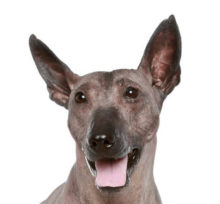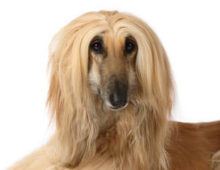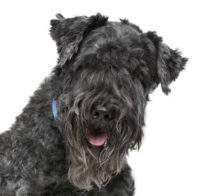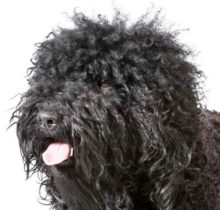Welcome to the world of hypoallergenic dog breeds—a haven for dog lovers with allergies. While not entirely allergen-free, these breeds are tailored to minimize the shedding of dander and hair, offering a solution for individuals who crave canine companionship without the allergy struggles.
Why It Matters
For those prone to allergies, owning a hypoallergenic dog opens the door to the joy of having a furry friend. In this guide, we'll explore various hypoallergenic breeds, their unique traits, and how they can seamlessly fit into different lifestyles. Whether you're a seasoned dog owner or a first-timer, join us on a journey into the world of hypoallergenic dogs, where the dream of a sniffle-free canine companion can become a reality.
What Makes a Dog Hypoallergenic
Understanding what makes a dog hypoallergenic is crucial. Let's break it down.
Hypoallergenic Qualities
Hypoallergenic dogs possess qualities that reduce the likelihood of triggering allergies. These breeds typically produce fewer allergens, such as dander and saliva, making them a more suitable choice for individuals with sensitivities.
Factors Contributing to Hypoallergenic Status
Several factors contribute to a dog being hypoallergenic. These may include specific coat types, such as hair instead of fur, and less shedding. Additionally, breeds with minimal dander production and lower saliva proteins are often considered hypoallergenic.
Dispelling the Myth of Completely Allergen-Free Dogs
It's important to note that no dog is entirely allergen-free. While hypoallergenic breeds significantly reduce allergen levels, complete elimination is a misconception. Understanding this reality helps set realistic expectations for individuals seeking a furry companion without compromising their health.
As we explore various hypoallergenic breeds in the following sections, keep in mind these distinctive qualities that make them suitable for allergy-prone dog lovers in the U.S.
Considerations for Potential Dog Owners
- Lifestyle Assessment:
- Evaluate your daily routine and activity level. Some hypoallergenic breeds thrive in active households, while others are more laid-back.
- Living Situation:
- Consider the size of your living space. Smaller hypoallergenic breeds may be more suitable for apartments, while larger ones might thrive in houses with yards.
- Allergy Sensitivity:
- Assess the severity of allergies. While hypoallergenic dogs produce fewer allergens, individual reactions vary. Spending time with a specific breed before committing can help gauge compatibility.
Guidance on Matching Breeds to Individual Needs
- Research Breed Characteristics:
- Explore the unique traits and temperaments of different hypoallergenic breeds. Some may be better suited for families with children, while others are ideal for singles or seniors.
- Grooming Requirements:
- Understand the grooming needs of each breed. While hypoallergenic dogs shed less, they often require regular grooming to maintain their coat and overall health.
- Energy Levels:
- Match the energy levels of the breed to your own. Active individuals may enjoy breeds that require more exercise, while those seeking a calmer companion may opt for a more relaxed breed.
Allergen Reduction Strategies
Living with a hypoallergenic dog is a joy, but it's essential to implement practical strategies for minimizing allergens in your home. Here are straightforward tips for maintaining an allergy-friendly environment:
- Regular Grooming Practices:
- Regular brushing helps remove loose hair and dander from your dog's coat, reducing the presence of allergens.
- Periodic baths with a hypoallergenic shampoo recommended by your vet can further minimize dander.
- Environmental Considerations:
- Establish specific areas for your dog, limiting their access to certain rooms or furniture to contain allergens.
- Invest in a quality air purifier with a HEPA filter to capture airborne allergens, including pet dander.
- Regularly vacuum carpets and upholstery using a vacuum cleaner equipped with a HEPA filter to trap fine particles.
- Wash bedding, curtains, and other fabrics your dog comes into contact with regularly.
- Indoor Air Quality:
- Ensure proper ventilation in your home. Open windows when weather permits to allow fresh air circulation.
- Maintain optimal humidity levels (ideally between 30-50%) to prevent the buildup of mold and dust mites.
- Allergen-Free Zones:
- Designate your bedroom as an allergen-free zone to provide a space for restful sleep without exposure to pet allergens.
FAQs about Hypoallergenic Dogs
Navigating the world of hypoallergenic dogs often brings about questions and concerns. Here, we address common queries and provide practical solutions and advice:
1. Are Hypoallergenic Dogs Completely Allergy-Free?
- Answer: No dog is entirely allergen-free. Hypoallergenic breeds produce fewer allergens, making them a suitable choice for individuals with allergies, but complete elimination is a misconception.
2. How Can I Test My Allergy Sensitivity to a Hypoallergenic Dog?
- Solution: Spend time with the specific breed you're considering before bringing one home. This can help gauge your reaction and compatibility.
3. Do All Hypoallergenic Breeds Have the Same Grooming Needs?
- Advice: Grooming requirements vary among hypoallergenic breeds. Some may need regular brushing, while others may require professional grooming. Research the specific needs of the breed you're interested in.
4. Are There Hypoallergenic Breeds Suitable for Families with Children?
- Solution: Yes, several hypoallergenic breeds are known for their gentle nature and compatibility with children. Research breeds with temperament traits that align with a family-friendly lifestyle.
5. Can Hypoallergenic Dogs Develop Allergies Themselves?
- Answer: Yes, while these breeds produce fewer allergens, they are not immune to allergies. Regular veterinary check-ups and a healthy diet can help manage potential allergy issues.
6. How Effective Are Air Purifiers in Reducing Allergens?
- Advice: High-efficiency particulate air (HEPA) purifiers can be effective in capturing airborne allergens. Place them in common areas to improve overall air quality.
7. Are There Hypoallergenic Breeds That Are Low Maintenance?
- Solution: Some hypoallergenic breeds have lower maintenance needs than others. Research breeds that align with your desired level of commitment to grooming and care.
Addressing these frequently asked questions provides insights into the world of hypoallergenic dogs, helping prospective owners make informed decisions and enjoy a harmonious relationship with their furry companions.
Conclusion
In conclusion, understanding and embracing hypoallergenic dog breeds offer a world of possibilities for dog lovers with allergies. Key takeaways include:
- Hypoallergenic dogs reduce allergen levels but are not completely allergen-free.
- Consider lifestyle, grooming needs, and specific breed characteristics when choosing a hypoallergenic companion.
- Implement practical strategies to minimize allergens at home.
We encourage you to explore the diverse world of hypoallergenic breeds further, discovering the perfect furry friend that aligns with your preferences and lifestyle. Your journey into the world of allergy-friendly companionship has just begun. We welcome your feedback and invite you to share your experiences and questions as you embark on this exciting and rewarding canine adventure.









